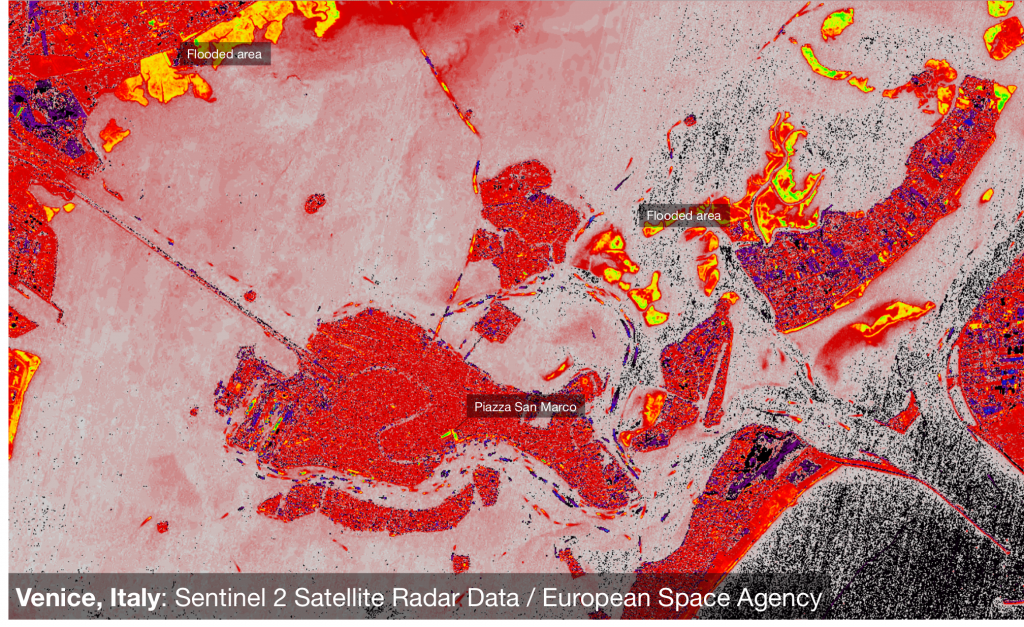Does your company know what to do with all the data you collect?
Are you too slow to innovate?
Do you spend your days trying to make a case for enhancing operations or building completely new business opportunities using data? Have you heard the word API, but scared it will take too long to discover what APIs to build?
Your competitors, customers, and partners are catching up with you and striding past as you are reading this article. Your bosses want you to build a killer app, but guess what? Users are not going to line up for it, just because you publish it. Users want stuff to work and data to flow, they don’t need “yet-another-UI”. But you need to develop something that adds value and you need to do it fast. Mission impossible?
The API first mindset help companies:
Imagine you are a manager at an insurance company handling the insurance claim aftermath of the sudden massive flood in Venice, Italy. Which of the thousands of have been really hurt by the flood and should be compensated?
Using a quick process from APIOps Cycles -method trained and consulted by Osaango and tools from WhereOS to try out a solution in a matter of days:
1) Identify the business problem by starting from the customer & employee needs
Look at the customer and employee journey to create a jobs-to-be-done list of tasks, example in this case: “Verify the extent of flood round a building with a flood claim”.
2) Get your software developers or data scientist involved and figure out what ready-made data and functionality would bring you gains:
“If we had satellite images from the flooded areas during the flood and an API to read the metadata like geolocation and the ability to match it with a street address of a building this would be very easy”.
Analyze any pains that you might have to use those data and APIs. Get your teams or partners, vendors etc. to suggest you APIs with features to solve those problems.
3) Identify all needed internal and external APIs meeting the required gain giving and pain-alleviating features.
For example Point API for Flood Level for detecting the current flood level. The level can be based on ESA satellite data and an API for flood history analysis.
4) Create a cost-benefit analysis, aka the business case or model
You can use the API Business Model Canvas to do that very easily. Just make sure you have the right business and tech people in the room to have that discussion.
5) Build the MVP with a few clicks and verify it with a real case
Let’s take some data from ESA (European Space Agency) Sentinel 2 satellites. Start using the WhereOS application and expose the APIs easily from the data set.
Test the system in a real-life example. You can use actual claims and manually inspected flood levels in different areas. You can make sure the system delivers the results as expected. Testing is light and efficient and allows a rapid reaction to pain points and continuous development.
Iterate: Go back to the business problem and measure against your KPIs hat your solution is actually delivering the value you wanted. Rinse and repeat and you will find out even better sources of cost savings or new profit. You can find out that you need to amend the data with other types of information (e.g. local weather data in the case of floods). This will help the system to deliver better results.
An example of a business model that an insurance company could come up with instead of just reducing the immediate costs: Insurance companies can classify claims based on the location of the property and detected flood levels. By using the classification companies can define which claims can be automated which need manual process. Insurance companies could offer historical flood risk analysis as a new service offering. The information would be valuable for property investors and insurance product designers.

Pic 1. Satellite radar data processed into a picture with WhereOS of Venice floods in November. Green and yellow areas represent areas that have been flooded. Data source: ESA Sentinel 2 Satellites.
Too often building APIs and using data is turned into technology-driven proof-of-concept projects and the projects are driven by technical teams. It’s also common that discussion revolves around technical solutions. The connection between technology and business is missing. The focus should be on proving and maximizing the business value and creating outstanding customer experiences with minimal investments into technical solutions. A business case has to be solid enough before starting to build an actual platform.
The partnership between Osaango and WhereOS strives to turn the process around. We focus 100% on proof-of-value projects, where we iteratively develop solutions with API first mindset. We help customers to focus on business goals and see underlying technical solutions and various systems through APIs. The API first mindset also ensures the rapid development of all the layers in the solution. Teams can develop their solutions independently by using the jointly agreed APIs.
Contact us
Founder of APIOps Cycles Method and co-writer of API Economy 101 book
Marjukka Niinioja, Osaango Ltd, marjukka.niinioja@osaango.com
More information: https://www.osaango.com
API development and WhereOS, Chief Data Scientist, Jussi-Pekka Partanen jp@eaglepeaks.com
More information: https://www.whereos.com